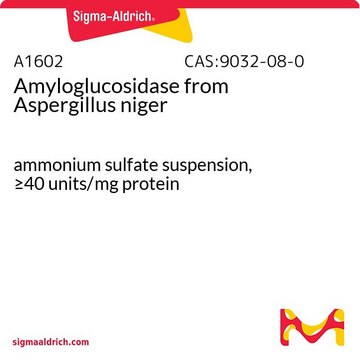A4559
Amyloid β-Protein Fragment 25-35
≥97% (HPLC)
About This Item
Productos recomendados
Quality Level
assay
≥97% (HPLC)
form
powder
composition
Protein Content, ≥80%
UniProt accession no.
storage temp.
−20°C
SMILES string
CCC(C)C(NC(=O)C(NC(=O)C(C)NC(=O)CNC(=O)C(CCCCN)NC(=O)C(CC(N)=O)NC(=O)C(CO)NC(=O)CN)C(C)CC)C(=O)NCC(=O)NC(CC(C)C)C(=O)NC(CCSC)C(O)=O
InChI
1S/C45H81N13O14S/c1-9-24(5)36(43(69)50-21-35(63)52-29(17-23(3)4)40(66)55-28(45(71)72)14-16-73-8)58-44(70)37(25(6)10-2)57-38(64)26(7)51-34(62)20-49-39(65)27(13-11-12-15-46)54-41(67)30(18-32(48)60)56-42(68)31(22-59)53-33(61)19-47/h23-31,36-37,59H,9-22,46-47H2,1-8H3,(H2,48,60)(H,49,65)(H,50,69)(H,51,62)(H,52,63)(H,53,61)(H,54,67)(H,55,66)(H,56,68)(H,57,64)(H,58,70)(H,71,72)
InChI key
WIHBNMPFWRHGDF-UHFFFAOYSA-N
Gene Information
human ... APP(351)
¿Está buscando productos similares? Visita Guía de comparación de productos
Amino Acid Sequence
General description
Application
- to induce neurotoxicity in cortical cultures
- to induce Alzheimer′s disease in rat model
- to induce apoptosis in mesenchymal stem cells (MSCs)
Biochem/physiol Actions
Other Notes
Storage Class
11 - Combustible Solids
wgk_germany
WGK 3
flash_point_f
Not applicable
flash_point_c
Not applicable
ppe
Eyeshields, Gloves, type N95 (US)
Certificados de análisis (COA)
Busque Certificados de análisis (COA) introduciendo el número de lote del producto. Los números de lote se encuentran en la etiqueta del producto después de las palabras «Lot» o «Batch»
¿Ya tiene este producto?
Encuentre la documentación para los productos que ha comprado recientemente en la Biblioteca de documentos.
Los clientes también vieron
Artículos
Alzheimer's disease (AD) is the most common cause of dementia in the elderly and is characterized by gradual loss of cognitive functions.
Nuestro equipo de científicos tiene experiencia en todas las áreas de investigación: Ciencias de la vida, Ciencia de los materiales, Síntesis química, Cromatografía, Analítica y muchas otras.
Póngase en contacto con el Servicio técnico



![[Ala28]-Amyloid β 25-35 ≥95% (HPLC)](/deepweb/assets/sigmaaldrich/product/images/306/938/dd9f7c72-cfca-4ea3-8e10-a7a2a7994639/640/dd9f7c72-cfca-4ea3-8e10-a7a2a7994639.jpg)







